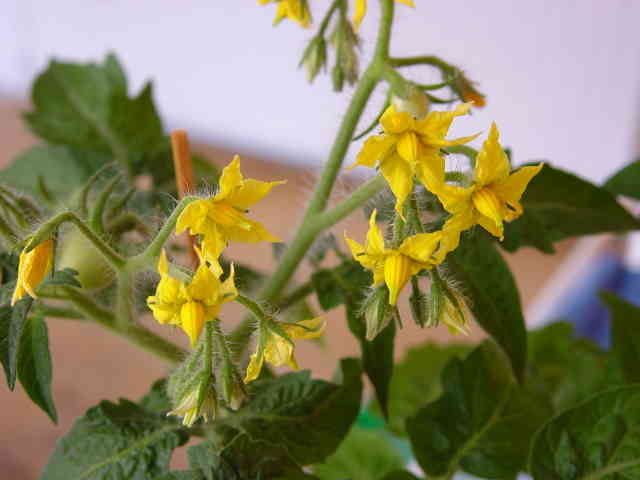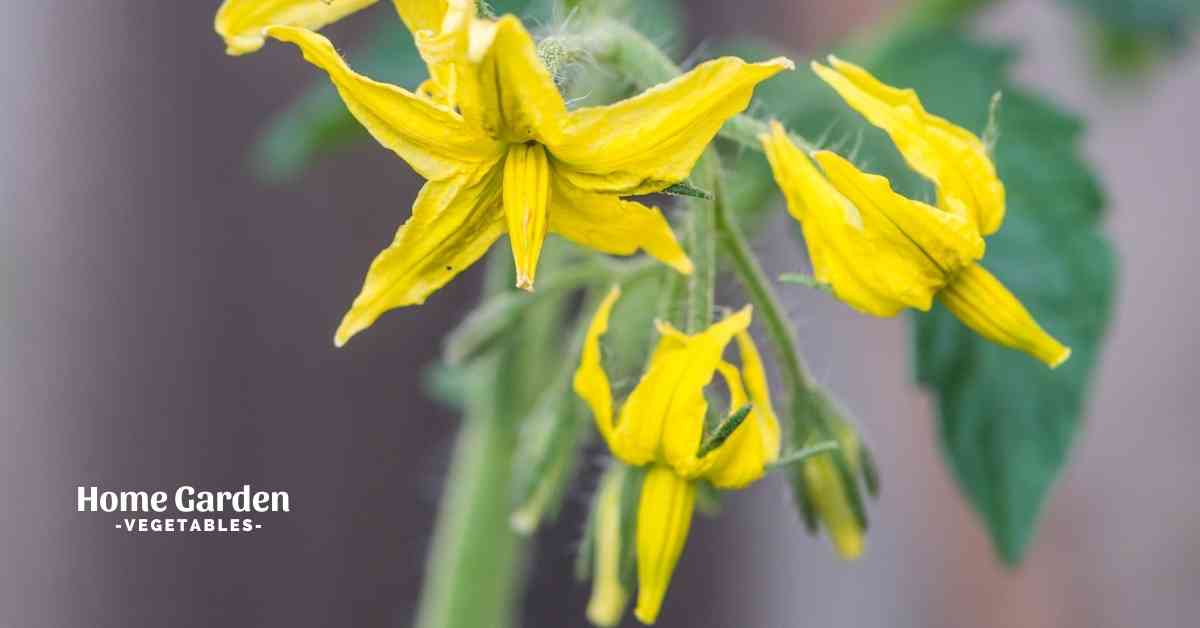Your tomato plants aren’t packed with fruit and you’re wondering why. You may find some consolation in the fact that you’re not the only one experiencing a less than optimal harvest. In fact, blossom drop and poor fruit set are among the most common complaints of tomato growers. Your tomato plant may be brimming with flowers, but only a few manage to develop into fruits before withering away or dropping. The problem is often a result of poor pollination.
While tomatoes are self-pollinating plants, that does not mean it won’t need any help from Mother Nature or you to fertilize the flowers and set fruit. If conditions aren’t optimal for pollination, you’ll need to lend a hand, literally, to make sure the plant still produces a bountiful harvest. Continue reading to learn if tomatoes need to be pollinated. You’ll also find some useful tips on assisting pollination.
Reader Poll: What online courses would interest you?

What Is Self-Pollinating?
What does it mean when we say tomatoes are self-pollinating? Self pollinating, or self-fertilizing, or self-fruitful plants have “perfect” flowers. This means that the flowers have both male and female parts on the same flower. When the pollen from the stamen falls on the stigma of the same flower or a different flower, we’ll see a fruit develop. This also means that you don’t need to plant more than one plant to get fruit. You can also get a crop with a single tomato plant since the flowers can fertilize themselves.
Do Tomatoes Need To Be Pollinated?
Tomatoes may be self-fertile, but pollination is still an important factor in ensuring fruit set. So, yes, tomatoes need to be pollinated to produce harvest. Optimal pollination also ensures that plump, juicy fruits develop instead of small, misshapen fruits. According to a South Dakota State University, the size and weight of the tomato fruit is directly proportional to the amount of pollen transferred to the stigma. Without sufficient pollination, smaller and poor quality yield may result.
How Does Pollination Work
In a tomato flower, the female parts, consisting of style and stigma, are enclosed within the male parts, consisting of stamen and anthers. When the anther matures, it opens up and releases pollen. Sufficient quantity of pollen needs to fall onto the stigma of the flower to fertilize the ovule and set fruit. Often the pollen falls on the stigma of the same flower. However, pollination also occurs when the pollen from one flower either falls on the stigma of another flower on the same plant or on a flower of a different plant.
Subscribe to our newsletter!
Optimal Conditions For Pollination
Pollination is affected by two important factors, temperature and humidity. Night temperatures lower than 55 degrees Fahrenheit interfere with pollen development, while daytime temperatures higher than 90 degrees Fahrenheit cause flowers to abort. Temperatures between 65 to 85 degrees Fahrenheit are ideal for tomato pollination.
In addition, high humidity is also a problem for pollination. High levels of moisture in the air cause pollen to stick together. As a result, pollination is either poor or non-existent. 50 to 80% humidity is ideal for tomato pollination. If the humidity rises above 80%, pollination will drop.
Pollination Methods For Tomatoes
You already know that the fruit size and weight depends on the amount of pollen transferred to the stigma. Flowers need some form of vibration to release the pollen optimally. If pollen is released without vibration, it won’t be available in sufficient amounts to fertilize the ovule optimally to produce a good fruit size.
There are different ways to vibrate the flowers and release pollen. Here are some of the most ideal ones for tomatoes:
Wind
One of the natural pollination methods easily available for outdoor tomato crops is wind. In open fields, there is often enough wind to vibrate the flowers for optimal pollination and fruit set. If all the other conditions, temperature and humidity, are optimal, you won’t find any pollination problems when growing tomatoes in open fields.
Buzz Pollinators
Tomatoes require a special kind of pollination called “buzz” pollination. Buzz pollinators, including carpenter bees and bumble bees, vibrate their bodies to shake the anther to release the pollen onto the bee’s body. Honey bees cannot pollinate tomatoes since they cannot perform buzz pollination, according to California Specialty Crop-Bee Connection. Some growers purchase bumble bees in maintenance free hives to pollinate tomato crops, especially when growing in greenhouses since wind pollination isn’t available.
Tap Support Strings
For home gardens or small scale commercial growers, tapping the support strings to vibrate the flower clusters can provide enough vibration to release the pollens and fertilize ovules. Once the tomato plants are in full bloom, tap the strings every other day to promote pollination and ensure optimal harvest. If there are no support strings, gently tap the stems every other day or so to get the pollen moving.
Battery Operated Vibrators
Greenhouse growers also use battery-operated vibrators to help pollination. These handy tools are easily available at any store that sells greenhouse gardening supplies. Just touch the tool on the stem behind the flower cluster for a few seconds to vibrate the flowers. Don’t bring the tool in direct contact with the flowers to prevent damaging the flowers. A battery-operated toothbrush can also do the trick.
Conclusion
So do tomatoes need to be pollinated? When growing the plants outdoors, Mother Nature is often enough to pollinate your tomato plants. However, if wind isn’t sufficient or the conditions aren’t optimal for pollination, you may have to intervene to ensure a healthy harvest.

